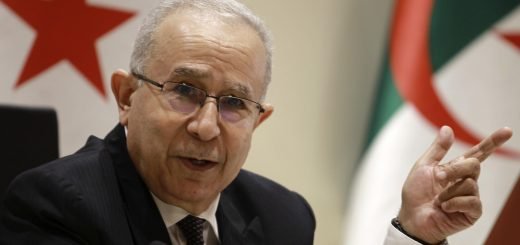Response to the Somali and Malian Jihadist Movements: What Lessons for Mozambique?

Abstract
Since 2017, Mozambique’s Cabo Delgado province has witnessed an unprecedented level of violence attributed to jihadist movements. The security threat, instability and deteriorating humanitarian situation in the area has attracted the attention of regional and international actors. The aim of this article is twofold. On the one hand, it discusses the response to jihadist movements in Somalia and Mali in order to explain and contextualize external interventions in Mozambique. On the other hand, it explores the extent of lessons-learned based on the evidence from Somalia and Mali. Specifically, it considers how such interventions may help shade light towards a better understanding of the origin and evolution of the Mozambican-based jihadist movement and the possible responses from external actors. The arguments are guided by a post-liberal approach. However, drawing from the relative deprivation theory, the article also focuses on the economic and social exclusion experienced in Cabo Delgado province and highlights the possible underlying root-causes of the current situation. As the main conclusion, lessons learned from stabilization and counterinsurgency interventions in Somalia and Mali must be an integral part of the responses to the Mozambique conflict.
Keywords: external interventions; jihadist movements; Mali; Mozambique; post-liberal; Somalia
Introduction
This article discusses external interventions, specifically in response to the activities of jihadist movements, in Sub-Saharan Africa. The scope of the article is broadly focused on the assessment whether stabilization and counterinsurgency actions led by external actors have contributed to tackle the activities of jihadist movements in Somalia and in Mali. A secondary focus is an attempt to investigate the more recent case of the conflict in northern Mozambique. The arguments made are anchored in the post-liberal approach and the relative deprivation theory, as they apply to the three cases under examination.
More specifically, the aim of this article is twofold. On the one hand, it contextualizes the extent to which evidence from Somalia and Mali shades light and contributes towards an understanding of the origin and evolution of the Mozambican-based jihadist movement, and possible responses from external partners. On the other hand, it explores the extent of lessons learned based on the evidence from the two distinctive case studies belonging to different security complexes in the Horn of Africa and the Sahel regions.
The article begins by explaining the origin and evolution of jihadist movements in Somalia (Horn of Africa) and Mali (Sahel) as two pertinent case studies that have received wide scholarship attention in recent times. The analysis includes an assessment of domestic origins of the movements, state-society relations, cleavages, and mapping of those movements. This is followed by the study of responses to their activity by regional and international actors, along with a comparative analysis of both movements and responses. Finally, we attempt to comprehend what the main lessons for Mozambique (Southern Africa) are, particularly considering the surge of the activities of jihadist movements in the northeast province of Cabo Delgado since 2017. The research is based on a combination of analysis of secondary data (existing literature and policy documents from external actors), as well as primary data collection involving semi-structured and open interviews including direct observation and remote communication between 2014 and 2021. Security and Covid-19 related travel restrictions prevented the collection of primary data which could have enabled the analysis of societal perspectives from community members in Somalia, Mali, and Mozambique. Yet, the article benefited from the observer-participant perspective of the authors as a result of their medium to longer-term presence in the Horn of Africa and in the Sahel, including in Somalia (2012-2021) and in Mali (2014-2015). Participants in the semi-structured interviews included key informants who are knowledgeable with conflict and security dynamics in both regions. These included former and current diplomats, United Nations (UN) and European Union (EU) officials, as well as academics and civil society members. All key informants took part in a personal capacity, thus no direct references to individuals are provided in the text.
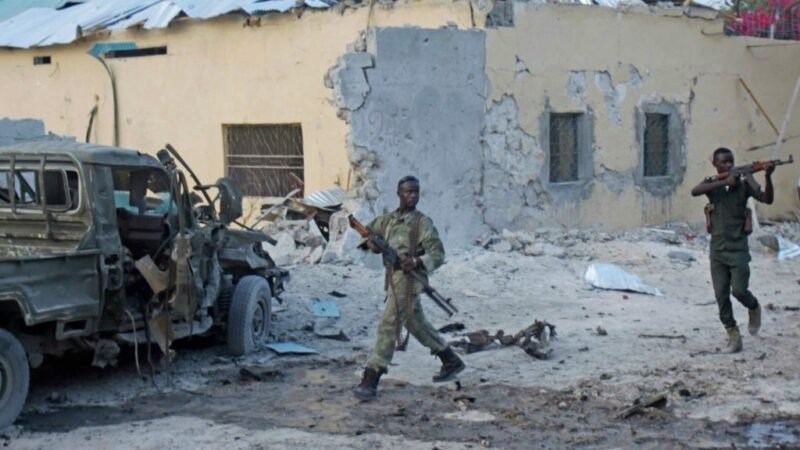
Origins and Expansion of Jihadist Movements in Somalia and Mali
The external intervention of neighboring Ethiopia in 2006 was a response to the emergence and transformation of the Islamic Courts Union (ICU). Hitherto restricted to the administration of the capital Mogadishu, the ICU became a national movement extending to the southern region of Somalia. As a matter of fact, in the face of instability created by inter-clan rivalry, only religion, Islam, would have survived as guarantor of a credible social order (Clapham, 2017). As it happened, the Ethiopian occupation of the capital in December 2006 triggered further instability across the country, accompanied by the promotion of Somalian nationalism by Islamist groups, with enhanced leadership of the then-young al-Shabaab militia. Al- though formalized as an organization in 2004-2005, al-Shabaab would only move from a clandestine network to an organization accepted within the framework of the unification process of the ICU in 2006. Already presented as an export product of the al-Qaeda ideology in Somalia, it did not formalize its affiliation with the organization before 2012 (Hansen 2019, 2016).
In the post-Djibouti agreement in 2008, with the withdrawal of the prolonged presence of Ethiopian and the election of the new president of Somalia in 2009, al-Shabaab was transformed temporarily into a state-owned entity — until the African Union Mission in Somalia (AMISOM)’s offensive in large urban centers. It gained capacity to act in ICU-controlled areas and attracted various clan leaders, controlling the central areas of Somalia within defined but unrecognized territorial borders (Hansen, 2019; De Waal, 2015). Nowadays, al-Shabaab controls most of the countryside in central and southern Somalia, constituting a proto-state.
For its part, the self-proclaimed Islamic State was formed on the periphery in the context of dissent processes in relation to al-Shabaab, giving rise to the Islamic State in Somalia (with a presence restricted to the Somali autonomous region of Puntland) and the East African Front (also including Kenya, Tanzania, and Uganda). Both movements do not have significant territorial expression (Schmidt, 2018; Hansen, 2019). In fact, the Islamic State insurgent capability is almost entirely restricted to infrequent attacks in the Bari region of Puntland. Most attacks have been directed against troops and police check points in the two main port towns of Qandala and Bosaso (EIP, 2018). There is no immediate indication that the Islamic State-affiliated will expand outside of its current area of operations.
Meanwhile, in the Sahel region, the alliance between the Malian and the United States of America (USA) governments, notably in the context of the USA-led Global War on Terror (GWOT) initiatives against terrorism in the region in the 2000s, would exacerbate tensions between Bamako and the Tuareg population in northern Mali (Gegout, 2017). In fact, the Tuareg rebellion in 2012 had both secular and nationalist features. Associated with the impact caused by the fall of the Gaddafi regime following the popular uprising in Libya in 2011 and subsequent Western-led intervention, the movement would eventually contribute to the 2012 military coup d’état that led to the Malian political crisis. This crisis enabled the proliferation of regional cross-border phenomena, such as smuggling, human trafficking and radical Islam (Schmidt, 2018; Harmon, 2014).
The Sahelian and West African countries have been exposed to the expansion of local al-Qaeda and Islamic State affiliates (from the 2000s and 2010s respectively). They operate mostly along the border areas of Mali, Niger, and Burkina Faso (Liptako-Gourma area). Among them is Al-Qaeda in the Islamic Maghreb (AQIM) with a presence practically restricted to the Timbuktu area in Mali, and until 2015, the Movement for Unity and Jihad in West Africa (MUJWA). According to Skretting (2020), at the origin of the creation of MUJWA is the reluctance of the AQIM’s leadership to take advantage of the political-military crisis in Mali to expand beyond the Algerian border. However, the trans-nationalization of AQIM became inevitable with the increased possibility of recruiting militants in the Sahelian region. On the other hand, Nasr (2021) highlights the involvement of AQIM in Algerian and Malian local causes, as well the al-Qaeda affiliate’s capacity to recruit amongst the most diverse ethnic communities, including the Dogon – besides others (Arab, Tuareg, and Fulani) integrating also Jama’at Nusrat Al-Islam Wa Al-Muslimeen (JNIM).
MUJWA recruitment focused mainly on communities, including Fulani (from both Mali and Niger), hostile to the hegemony exerted by the Tuareg (Raineri, 2020). Some important recent developments include the integration in 2017 of the (until then relatively independent) Ansar Dine in the JNIM coalition along with al-Mour- abitoun (fractured since 2015, with members divided between support for Islamic State and al-Qaeda) and the Macina Liberation Front or Macina Katibat. In the genesis of this liberation movement — formed by Fulani from central Mali in 2015 — is the aspiration to change the political and social order of that part of the country.
This has, in effect, guaranteed JNIM a certain degree of control of the Niger river’s inland delta.
Moreover, the Islamic State of the Greater Sahara (ISGS)’s mobilization capacity can be explained less by personal material gains than by prestige that local youth believe to achieve by integrating jihadist-armed factions (Raineri, 2020). As it is the case in the Horn and East African region, ISGS has survived “on the periphery of the periphery”, without significant territorial expression (Hansen, 2019). Yet, the movement is active in the Liptako-Gourma area, alongside JNIM (Thurston, 2020). The shift of France-led military intervention from targeting the ISGS to targeting JNIM in that area contributed to ISGS’s offensive, and increased confrontation with JNIM. It is worthwhile to note that while ISGS was not able to override JNIM, it did —in combination with the French intervention codenamed as Operation Barkhane— manage to weaken its rival (Nasr, 2021).
Whereas in the north a modus vivendi has since been achieved between the two rival coalitions following the signature of 2015 Peace and Reconciliation Accord, there was an increase in violence between communities in central Mali (Boute- llis, 2021; Van der Lijn et al, 2019). The region is characterized by greater ethnic pluralism and polycentric conflict dynamics spreading across the Malian southern borderlands (Franco, 2021). The activity of jihadist movements along with retaliation by state security forces promoted the proliferation of self-defence groups. This constitutes the privatization of a state or public service — security. Furthermore, other public services have been fulfilled by non-state actors, including traditional authorities and jihadist movements.
The ramification of the movements in the region cannot be understated. To a lesser extent, another tri-border area, between Mali, Burkina Faso, and Côte d’Ivoire- ire, has also been object of their expansion — likely of JNIM’s members such as Macina Katibat. After the 2016 attacks in Grand Bassam on the south coast of Ivory Coast, border posts in the north of the country have been the target of sporadic attacks, mostly since 2018. Moreover, Benin and Togo witnessed the intensification of attacks perpetrated by jihadist groups, in particular along the northern border areas with Mali and Burkina Faso (Kwarkye, 2022).
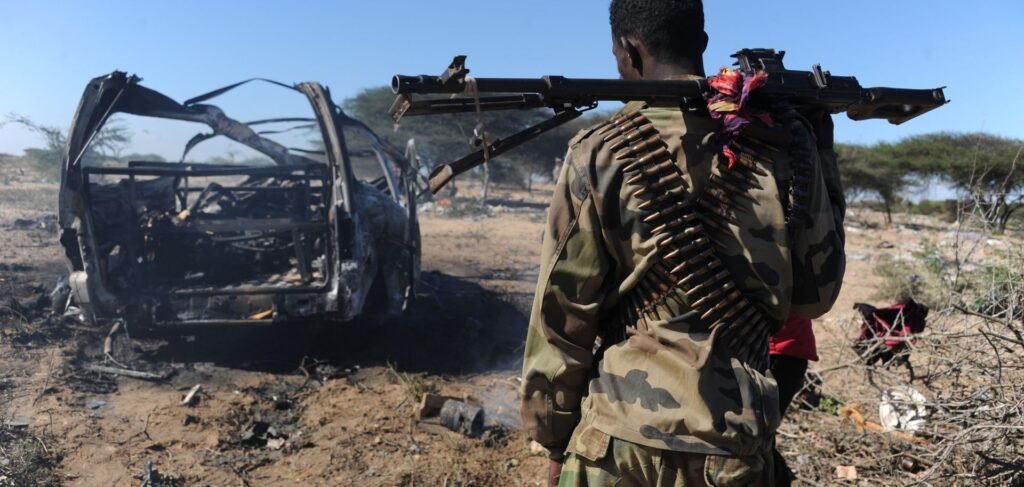
Responses to the Activities of the Jihadist Movements in Somalia and Mali
In Somalia, from the 2000s onwards, external assistance began to focus not only on the implementation of specific programs in a post-conflict context, including security sector reform (SSR) and the promotion of the rule of law, but above all on strengthening the capacities of the (central) state to prevent and manage security, in particular jihadist movements, such as al-Shabaab and the self-proclaimed Islamic State. AMISOM has been a counterinsurgency operation since its establishment in 2007. The AU mission was originally foreseen as a short-term operation in preparation for the establishment of an UN-led peacekeeping operation in Somalia, which did not materialize due to difficulties in guaranteeing security conditions for deployment (Williams et al 2018). Integrating military, police, and civil components, AMISOM assumed a stabilization role from 2013 while being supported logistically by the United Nations Support Office in Somalia (UNSOS), and in assistance to the Federal Government of Somalia (Williams 2018, Lotze & Williams 2016, De Waal 2015).
In contrast with south-central Somalia, Puntland does not receive security assistance from AMISOM forces or from the Somali National Army (SNA). As a result, the security infrastructure is derived from locally recruited personnel and dependent on international support to fund and train security and police elements. Al-Shabaab had established a presence in Puntland when AMISOM operations pushed them out from central Somalia into the Galgala hills. Sponsored by the United States of America (USA), Puntland security forces carried out raids in 2013. Yet not only did the operation fail to drive al-Shabaab out, but it also drove the militant group into a temporary alliance with Puntland pirates (Felbab-Brown, 2017).
Unlike AMISOM, the African-led International Support Mission to Mali (AFISMA), established in late 2012 by the Economic Community of West African States (ECOWAS) with the endorsement of the UN Security Council through Resolution 2085, did not obtain the UN’s logistical and financial support. It was an initial solution sought by France and the USA, favouring ECOWAS over the AU (Gegout 2017; Williams & Boutellis 2014). It would be a unilateral military action, carried out by France in 2013, Operation Serval, to continue the external intervention period in Mali with the proviso to be followed by a UN stabilization mission (likely to secure more funding than AFISMA). The Mission Multidimensionnelle Intégrée des Nations Unies pour la Stabilisation au Mali (MINUSMA) was initially deployed with a stabilization objective centred in its mediation role to secure a political agreement, which would then materialize in the form of the 2015 Peace Accord signed in Al- ger. Furthermore, the UN integrates regional coalitions in its peace operations with the aim of combating armed and terrorist groups. In this context, MINUSMA has been collaborating, namely by the provision of logistics support, with the Joint Force G5 Sahel (authorized by the AU and composed of Mali, Burkina Faso, Niger, Chad, Mauritania) and Barkhane operations in counterinsurgency and counterterrorism efforts (Charbonneau 2019).
Until 2021, French interventionism focused mainly on Mali despite its growing regional scope — which also informed EU’s regionalization process of its Common Security and Defense Policy (CSDP). CSDP civilian and military missions in the Sahel/Mali and the Gulf of Aden/Somalia reflect the centrality of Security Sector Reform (SSR) within EU’s approach to stabilization in general and state-building in particular. Viewed from a military perspective, both the EU and the USA support regional and continental actors in a proxy security provision logic (Olsen, 2014; Gegout, 2017). This is the case of EU’s support to the G5 Sahel Joint Force and AM- ISOM which benefit from substantial EU funding within the operationalization of the African Peace and Security Architecture – APSA[1] (Marsh et al, 2020; Williams, 2018; Vines, 2013; Desgrais & Le Gouriellec, 2016).
As a point of interest, the European military intervention in the Sahel corresponded, above all, to that of one Member State – France. France also launched Operation Hydre in the Gourma region in 2013 and in 2020 led to the establishment of the Takuba Task Force, with contributions from several EU Member States aimed at re-inforcing Operation Barkhane. However, French interventionism in Mali — and by extension the EU’s — was suspended in 2022 in the aftermath of the 2020 and 2021 Malian coups d’état.[2]
It is, therefore, not surprising that the relevance and effectiveness of CSDP training missions, such as EUTM Somalia and EUTM Mali, are often questioned.[3] In view of the challenges inherent to the conditions of the Somali and Malian armed forces, the EU military missions are characterized by the frequent rotations of mission personnel deployed by different EU Member States. This prevented the establishment of relationships with local actors, including with high-ranking officials, and the adaptation of trainees to the different activities. A lack of post-training counselling and field mentoring for trainees was also evident.
Recent plans for the redistribution of the French and EU presence to the countries of the Gulf of Guinea (EC 2022) reflect the concern of cross-border insecurity resulting from the regionalization of what once seemed like country-specific phenomena. To further illustrate, in the Sahel, cross-border security programs under the Accra Initiative led by states in the region have been put in place since 2017 with the intent of tackling transnational crime, including terrorism. Even though it is not recognized by the African Union (AU), the Initiative led to military operations, such as Operation Koudanlgou II in 2018, carried out by Burkina Faso, Côte d’Ivoire, and Ghana (Mali had observer status) in southern and western Burkina Faso.
On the other hand, al-Shabaab’s activities continue to pose a major threat to the Horn and East African countries. Several violent incidents in the past years under- score the proliferation of the activities of the Somali jihadist movement in the region, including in Uganda in 2010 (Hugon, 2015), but mostly in Kenya’s capital, coast, and tri-border region with Somalia and Ethiopia.[4]
In that context, the external response to the activities of the jihadist movement in Somalia continues to be led and coordinated by the AU. AMISOM’s mandate officially ended in March 2022 after fifteen years giving way to a newly established African Union Transition Mission in Somalia (ATMIS) which came into effect in April 2022. In March 2022 alone, al-Shabaab launched a twin suicide attack on an election venue in Hirshabelle state’s Beledweyne city and breached the highly fortified Mogadishu’s Halane Airport perimeter for the first time since 2014. Thus, AMISOM’s replacement comes at a critical time as al-Shabaab remains potent inside Somalia and the region (Ajú, 2022).
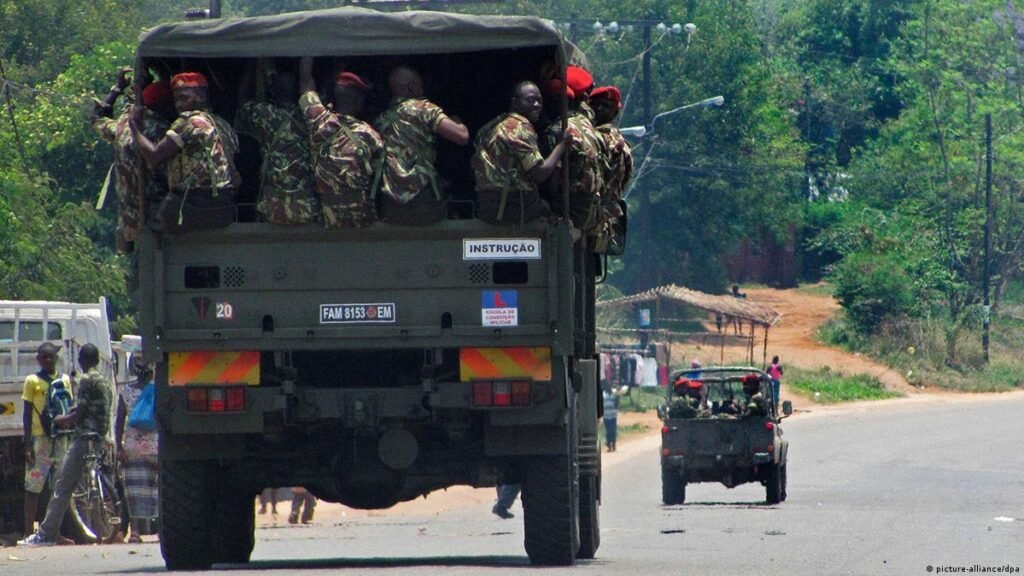
The Mozambican Insurgency
The causes of the insurgency in the northeast province of Cabo Delgado in Mozambique are contested, or at least diverse (Morier-Genoud, 2020). They range from religion to poverty and marginalization in an area rich in natural resources where the state’s legitimacy — rather than its legality — also tends to be absent.
Mozambican insurgency gained visibility first after the attacks in 2017 in Mocím- boa da Praia and the complex attack in the town of Palma and coastal Macomia in March 2021. Despite an appropriation of the term al-Shabaab by what was considered a local sect dating at least from 2007, the movement pledged allegiance to the self-proclaimed Islamic State of Iraq and the Levant (ISIL) in 2019. Hence, it integrates, at least formally, the Islamic State Central Africa Province (ISCAP). The adoption of the name Al-Sunnah Wal-Jamâa by the movement failed, prompting it to re-appropriate the name al-Shabaab, by which it has been locally known (ibid). Furthermore, there are signs indicating that the phenomenon is transnational with possible growing linkages with the ISIL and its local branch in the Democratic Republic of Congo (DRC).
Inspired by Wahabism, members of the Mozambican radical group are mainly young local people who reject the secular state and advocate for a sharia-based political order, thus showing close ties with the movements in Tanzania and Somalia. There are reportedly elements originating from Central and East African neighbouring countries, namely the DRC, Tanzania, Uganda, and Kenya (Matsinhe & Valoi, 2019; Habibe et al, 2019). Although disputed, the link between the Mozambican in- surgency and ISIL in Somalia has been established by the UN, allegedly through a suggestion of the Mozambican local branch (along with DRCs) being commanded by the Puntland centre.[5] Nevertheless, unlike ISIL or al-Shabaab in Somalia, there is no clear evidence of the Mozambican Islamist movement having a political agenda of its own.
Given that there is a clear indication that the movement appears to be transnational, is or may become transregional, external intervention would normally be expected from the region itself within the framework of AU’s APSA, via the SADC, possibly in coordination with EAC. Delaying the start of a foreign intervention period, the Mozambican government prioritized the request for the EU’s assistance, mostly in the form of training of special forces, towards its counterterrorism efforts, like the bilateral support being provided by the USA and Portugal. Nonetheless, the second half of 2021 was marked by the establishment and deployment of different external military interventions, from neighbouring Rwanda, from the SADC Mission in Mozambique (SAMIM), and from the EU in the form a new training mission (EUTM Mozambique, similar to the CSDP military training missions deployed in countries such as Somalia, Mali or the Central African Republic). Moreover, the revised EU strategy for the Horn of Africa released in May 2021 has a broader maritime dimension, expanding from the Red Sea to the Western Indian Ocean, in order to include the Mozambican coast (EC, 2021).
Whereas similarities with the Somali and Malian cases tend to be overstated, the current domestic counterinsurgency logic in northern Mozambique may follow the same pattern as the one pursued in Somalia, and in the Sahelian borderlands, most notably in Liptako-Gourma, with or without the active participation of external actors. For instance, recent developments include the internal ramification of the conflict to the northwestern province of Niassa, as well as the establishment of the so-called “local forces”, a form of non-state/self-defence groups, operating in Cabo Delgado province.
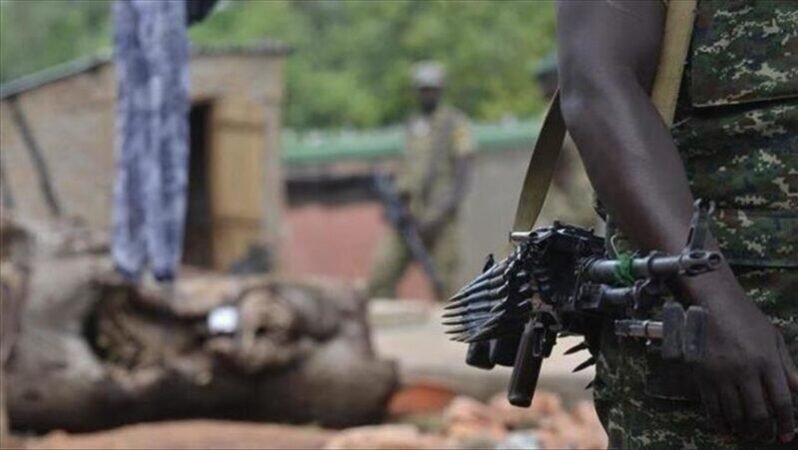
Causes of Violent Conflicts and the Post-Liberal Approach
Regardless of who perpetrates them, violent conflicts have multiple causes with different sets of causes from each other, rooted in specific histories and processes of political economy. Further, during violent conflicts, the impact and dynamics of violence are complex given that they vary spatially, socially, and temporally, often at highly disaggregated levels. This perspective suggests that no conflict is an island which is why external actors or donors cannot read off best practice guidelines from a general blueprint for conflict analysis and response (Cramer, 2009).
Thus, in a causal chain leading to conflict, the idea of linking the unfolding extreme violence in northern Mozambique, as well as in Somalia and Mali, to poverty, socio-economic exclusion and generalized frustration is not farfetched. As matter of fact, Gurr’s relative deprivation theory explains that political violence is the result of collective discontent arising from a discrepancy between expected and achieved welfare. Gurr’s argument may also serve as a possible explanation for what motivates individuals to commit terrorist attacks (cited by Richardson, 2011). At the core of Gurr’s theory, there are two mechanisms by which poverty might be claimed to operate as a significant cause of conflict. First, poverty may generate bitterness and rage which, in turn, may cause poor people to protest. The protest may provoke repression and tensions may escalate into open armed conflict, completing the causal mechanisms of a frustration-aggression nexus (Guur, 1970). Second, poverty may cause conflict because violence is simply cost-free, especially where there are incentives to engage in conflict. Put differently, because the poor have a comparative advantage in violence or simply because the opportunity cost of violence is low for the poor, they are likely to make conflict more likely. If poverty provokes violent resentment, then surely extreme poverty will intensify frustration and tip the balance even more easily towards conflict (Cramer, 2009).
Poverty is obviously not the sole factor that explains the conflicts in Somalia, Mali, and Mozambique. In both Somalia and Mali, contested state formation and lack of commitment to the federal projects jeopardize the state legitimacy, often along ethnical or clan lines with regional ramifications. This resulted in the privatization of state functions and generalized grievances. At the same time, external actors tend to prioritize state government to the detriment of other forms of governance or informal social contract.
Likewise, in Mozambique, several factors contributed towards exacerbating the tensions which existed for decades owing to engrained local perceptions of inequalities and injustices, along with complex ethnic, domestic, and regional issues. Those include religion, illicit trade, and narco-traffic, as well as the discovery and extraction of natural resources, such as oil and gas, without regard to the local context.
To further illustrate, research carried out by Nelson (2020) points out that a triangle of vulnerability for illicit trafficking is emerging as a key geographic space along Africa’s seaboard — the Swahili coast. At one apex of this triangle is Zanzibar which has been a major hub for illicit trade for decades, but one that is currently assuming greater importance. Further south, another apex is northern Mozambique which is experiencing significant conflict and instability and is increasingly considered as a key through route for the illicit trafficking of heroin into the continent and wildlife products from the interior. The final apex of the triangle is out to sea: the Comoros islands. These three apexes are linked by illicit economies and trade routes which take little heed of modern political boundaries.
In a recent report, the International Crisis Group (ICG) noted that a security response to stem the insurrection in Mozambique’s Cabo Delgado province was needed but the government and its allies also needed to think carefully about how they could address the grievances underpinning a rapidly expanding challenge that in essence started as a local revolt (ICG 2021). At the heart of this assertion lies the question of the post-liberal approach to addressing violent conflicts.
In the post-liberal context, there is a noticeable tendency for external actors to undercut other alternative forms of conflict resolution, resorting instead to the prioritization of state governance. This effectively undermines the bottom-up approach which is crucial in order to deal with the root causes of violent conflict regardless of whether it involves state or non-state actors. This view is supported by Finkenbusch (2016) when he argued that post-liberal approaches demand that peacebuilding should begin from the local, the everyday.
More importantly, in their attempt to make the local and even the far deeper local-local the starting point of peacebuilding, ‘post-liberals’ encounter a very concrete problem: ‘Who is the “local” and where is the “everyday”?’. While post-liberal peacebuilders acknowledge that peace must be negotiated locally, it is equally clear to them that this process must be prompted externally. Hence, identifying genuinely lo- cal counterparts becomes a top priority. For post-liberal peacebuilders, this involves overcoming a double obstacle. Their methodological challenge is to confront the edifice of Western ontological assumptions and, at the same time, the epistemologies without resorting to new metanarratives of peace (Ibid.)
Conclusion
The violent conflict in Mozambique’s Cabo Delgado province which emerged first as a revolt by the local population due to long-held grievances caused by socio-economic exclusion and prevailing inequalities is now overtaken by radical Islamist insurgents with possible — albeit contested — links to international terrorist networks such as ISIL and the Somali-based group al-Shabaab. Like Somalia and Mali where jihadist movements expanded over the last decade, the situation in northern Mozambique attracted international attention and has galvanized both regional and international partners who are supporting the government of Mozambique in its response to the threat posed by the movement.
As it turned out, the Somalia and Mali cases have revealed that any external intervention cannot be isolated from socio-political and economic considerations including endemic poverty, nor from transborder security governance issues. In the specific case of Mozambique, the tri-border area of Mozambique-Tanzania-DRC and its maritime dimension may require further support from France and South Africa (as the only African naval power) through a holistic approach. The need for this approach is that it facilitates the linking of protection of civilians, security, and socio-economic development (particularly, targeting the youth) along with engagement in a political dialogue that promotes state-society relations and the state’s legitimate authority.
An effective response by the government and its regional and international partners requires also a bottom-up strategy, while simultaneously recognizing the local dynamics and the transborder nature of the conflict. Failure to do so may render the external intervention by SADC, Rwanda, EU and indeed the AU, including other bilateral partners, as futile. Therefore, it is vital that the lessons learned from Somalia and Mali’s stabilization and counterinsurgency interventions become an integral part of the attempts being made to address the ongoing conflict in northern Mozambique.
Link to original paper: http://rpcp.pt/index.php/rpcp/article/view/135
References
- Data de receção: 15/02/2022 Data de aprovação: 19/07/2022
- Ajú, M. M. (2022). “Reshaping the African Union Mission in Somalia: From AMISOM to ATMIS”. The Horn Bulletin, 5: 3. Available at https://horninstitute.org/wp-content/ uploads/2022/06/HORN-Bulletin-Vol-V-Iss-III-May-June-2022.pdf
- Almeida dos Santos, F. (2020). War in resource-rich northern Mozambique- Six scenarios.
- CMI Insight, 2, Chr. Michelsen Institute.
- Baudais, V., & S. Maiga (2022). The European Union Training Mission in Mali: An Assessment, Stockholm International Peace Research Institute. Available at https://www.sipri.org/sites/default/files/2022-04/bp_2204_eutm_mali.pdf
- Boutellis, A. (2021). MINUSMA’s 2021 mandate renewal in uncertain times. Oslo: EPON network, Norwegian Institute of International Affairs.
- Campbell, H. G. (2020). “The War on Terror as a Business: Lessons from Kenya and the So- malia Interventions”, The African Review, 47: 1–40.
- Charbonneau, B. (2019). “Intervention as counter-insurgency politics”. Conflict, Security & Development, 19:3, 309-314.
- Clapham, C. (2017). The Horn of Africa. State Formation and Decay. London: Hurst, 2017. Cramer, C. (2009). Violent conflict and the very poorest, Working Paper No. 129., Chronic
- Poverty Research Centre.
- De Waal, A. (2015). The Real Politics of the Horn of Africa: Money, War and the Business of Power. Cambridge: Polity.
- Desgrais, N. & Le Gouriellec, S. (2016). Stratégies d’extraversion: Les défis de la construction de l’Architecture africaine de paix et de sécurité. Note de recherche stratégique n.° 28, Institut de Recherche Stratégique de l’Ecole Militaire.
- European Commission (2022). Holistic Strategic Review of EUTM Mali and EUCAP Sahel Mali 2022- working document of the European External Action Service of 20/05/2022. Available at https://media.euobserver.com/ce019f3357aff2c61c7717085550bacb.pdf
- European Commission (2021). The Horn of Africa: a geo-strategic priority for the EU – Council conclusions. Available at https://data.consilium.europa.eu/doc/document/ ST-8135-2021-INIT/en/pdf
- European Institute of Peace (2018). The Islamic State in East Africa. Available at www.eip. org/publication/report-islamic-state-in-east-africa
- Felbab-Brown, V (2017). Puntland’s Problems. It’s Not Just Al Shabab That Threatens the Region’s Stability. Foreign Affairs. Available at www.foreignaffairs.com/articles/africa/2017-06-15/puntlands-problems
- Finkenbusch, P. (2016). Post-liberal peacebuilding and the crisis of international authority,
- Peacebuilding, 4: 3, 1-15.
- Franco, A. C. (2021). External interventions in Mali and its borderlands – a case for stabilisation. Janus.net, e-journal of international relations, 12:2, 75-88.
- Gegout, C. (2017). Why Europe Intervenes in Africa. Security, Prestige and the Legacy of Colonialism. London: Hurst.
- Guur, T. R. (1970). Why Men Rebel. New Jersey: Princeton University Press.
- Habibe, S., Forquilha, S. & Pereira, J. (2019). Islamic Radicalization in Northern Mozam- bique: The Case of Mocímboa da Praia. Cadernos IESE n.º 17. Maputo: IESE.
- Hansen, S. J. (2019). Horn, Sahel and Rift. Fault-lines of the African Jihad. London: Hurst. Hansen, S. J. (2016). Al-Shabaab in Somalia: The History and Ideology of a Militant Islamist
- Group. London: Hurst.
- Harmon, S. (2014). Terror and Insurgency in the Sahara-Sahel Region: Corruption, Contraband, Jihad and the Mali War of 2012-2013. Burlington: Ashgate.
- Hugon, P. (2015). Geopolítica de Africa. Escola Editora: Lisbon.
- International Crisis Group (2021). Stemming the Insurrection in Mozambique’s Cabo Del- gado. Africa Report n.303. Available at www.crisisgroup.org/africa/southern-africa/mozambique/303-stemming-insurrection-mozambiques-cabo-delgado
- Kwarkye, S. (2022). West African coastal terror attacks: just the tip of the iceberg. Institute for Security Studies. Available at https://issafrica.org/iss-today/west-african-coastal- terror-attacks-just-the-tip-of-the-iceberg
- Lotze, W. & Williams, P.D. (2016). The Surge to Stabilize: Lessons for the UN from the AU’s Experience in Somalia. New York: International Peace Institute.
- Marsh, N., Rolandsen, Ø. H., Karssen, J. & Sandnes M. (2020). Compounding Fragmentation: Security Force Assistance to Fragile States in the Sahel and Horn of Africa. Oslo: Peace Research Institute Oslo.
- Matsinhe, D. M, & Estácio, V. (2019. The genesis of insurgency in northern Mozambique.
- Southern Africa Report 2, Pretoria: Institute of Security Studies.
- Morier-Genoud, E. (2020). The jihadi insurgency in Mozambique: origins, nature and be- ginning. Journal of Eastern African Studies, 1-17.
- Nasr, W. (2021). Implications of Al Qaeda in the Islamic Maghreb’s New Leadership, New- lines Institute for Strategy & Policy. Available at https://newlinesinstitute.org/al-qa- eda/implications-of-al-qaeda-in-the-islamic-maghrebs-new-leadership/?s=03
- Nelson, A. (2020). A Triangle of Vulnerability: Changing patterns of illicit trafficking off the Swahili Coast. Research Report. Global Initiative Against Transnational Organized Crime. Available at https://globalinitiative.net/analysis/triangle-vulnerability-swahi- li-coast/
- Olsen, G. R. (2014). Fighting terrorism in Africa by proxy: the USA and the European Union in Somalia and Mali. European Security, 23:3, 290-306.
- Raineri, L. (2020). Explaining the Rise of Jihadism in Africa: The Crucial Case of the Islamic State of the Greater Sahara. Terrorism and Political Violence, 1-15.
- Richardson, C. (2011). Relative Deprivation Theory in Terrorism: A Study of Higher Education and Unemployment as Predictors of Terrorism, Senior Honors Thesis, New York University. Available at: https://pdfs.semanticscholar.org/8cde/665bbd27872a4a920b08e- 9f2774a5cd87d12.pdf
- Schmidt, E. (2018). Foreign Intervention in Africa after the Cold War. Sovereignty, Responsibility and the War on Terror. Athens: Ohio University Press.
- Skretting, V.B. (2020). Al-Qaida in the Islamic Maghrib’s Expansion in the Sahara: New Insights from Primary Sources. Studies in Conflict & Terrorism, 1–25.
- Thurston, A. (2020). Jihadists of North Africa and the Sahel: Local Politics and Rebel Groups.
- Cambridge: Cambridge University Press.
- Van der Lijn, J., Abouelnasr, L. N, Ahmed, T., Darkwa, L., von Gienanth, T., Edu-Afful, F., Karlsrud, J., & Rupesinghe, N. (2019). Assessing the Effectiveness of the United Nations Mission in Mali (MINUSMA), EPON network. Oslo: Norwegian Institute of International Affairs.
- Vines, A. (2013). A decade of African Peace and Security Architecture. International Affairs, 89: 1, 89–109.
- Williams, P. D. (2018). Fighting for Peace in Somalia: A History and Analysis of the African Union Mission (AMISOM), 2007-2017. Oxford: Oxford University Press
- Williams, P.D., & H.Y. Ali (2021). The European Union Training Mission in Somalia: An assessment, Stockholm International Peace Research Institute. Available at https:// www.sipri.org/sites/default/files/2021-02/bp_2011_eutm_somalia_3.pdf
- Williams, P. D., & Boutellis A (2014). Partnership peacekeeping: Challenges and opportunities in the United Nations-African Union Relationship. African Affairs, 113: 451, 254–278.
- Williams, P. D., D’Alessandro, M., Darkwa, L., de Coning, C., Helal, A., Machakaire, J., and Rupesinghe, N. (2018). Assessing the Effectiveness of the African Union Mission in Somalia (AMISOM), EPON network. Oslo: Norwegian Institute of International Affairs.





